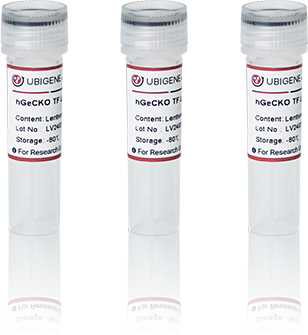EZ-editor™
Gene-editing Series Products
With 14 years of experience, Ubigene has exclusivelyinnovated and developed 6 product lines, fullfilling all kinds of needs from researchers. Experiment process simplified, efficiency improved, achieving our aim of Make genome editing easier!

Catalog#: LIBR-H070-P100
Size : 100ug 200ug 500ug
Order Now
Catalog#: LIBR-H070-P100
Size : 100ug 200ug 500ug
Order Now